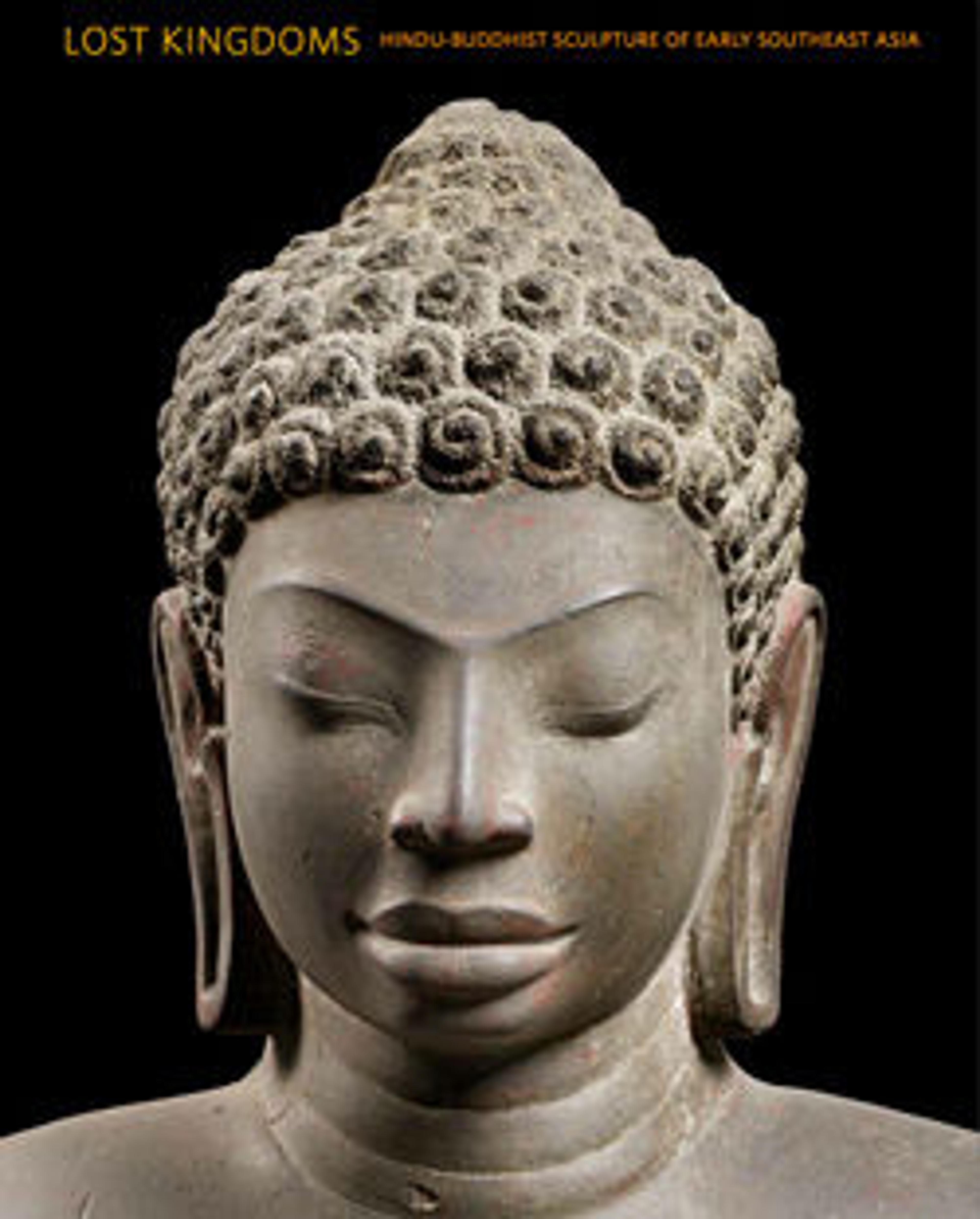Bodhisattva Avalokiteshvara
Artwork Details
- Title:Bodhisattva Avalokiteshvara
- Date:second quarter of the 8th century
- Culture:Plai Bat II Temple, Lahan Sai District, Buriram Province, Thailand
- Medium:Copper alloy inlaid with silver and glass or obsidian
- Dimensions:H. 56 in. (142.2 cm); W. 22 1/2 in. (57.2 cm); D. 15 1/4 in. (38.7 cm)
- Classification:Sculpture
- Credit Line:Rogers Fund, 1967
- Object Number:67.234
- Curatorial Department: Asian Art
Audio
7992. Bodhisattva Avalokiteshvara, Part 1
NARRATOR: An abundance of tin in the alloy lends a silvery sheen to this lean bronze figure from Thailand. Inlaid silver and glass animate the wide-set eyes. This Buddhist deity’s four hands once held his attributes, now lost. But he can be identified by the seated figure in front of his precisely rendered hairstyle. This small image of the Buddha Amitabhsa identifies the large figure as his spiritual offspring, the bodhisattva Avalokiteshvara. Avalokiteshvara intercedes on behalf of mortals who pray to him, so that they may be forgiven their karmic debts and enter paradise. Atypically, this bodhisattva isn’t adorned with the ornaments of a prince, but appears more ascetic in nature. The modeling and type of garment help date it to the 8th century. This is the largest in an important cluster of early Thai bronzes unearthed in 1964. Modeled in a new and unknown style, the sculptures found near Prakhon Chai in Northeast Thailand opened a new chapter in the history of Southeast Asian art. Almost all were bronze bodhisattvas, although traditionally, Thailand was associated with Theravada Buddhism. Based on the historical Buddha’s teachings, Theravada deemphasizes intercessory figures like Avalokiteshvara.
Listen to more about this artwork
More Artwork
Research Resources
The Met provides unparalleled resources for research and welcomes an international community of students and scholars. The Met's Open Access API is where creators and researchers can connect to the The Met collection. Open Access data and public domain images are available for unrestricted commercial and noncommercial use without permission or fee.
To request images under copyright and other restrictions, please use this Image Request form.
Feedback
We continue to research and examine historical and cultural context for objects in The Met collection. If you have comments or questions about this object record, please contact us using the form below. The Museum looks forward to receiving your comments.
